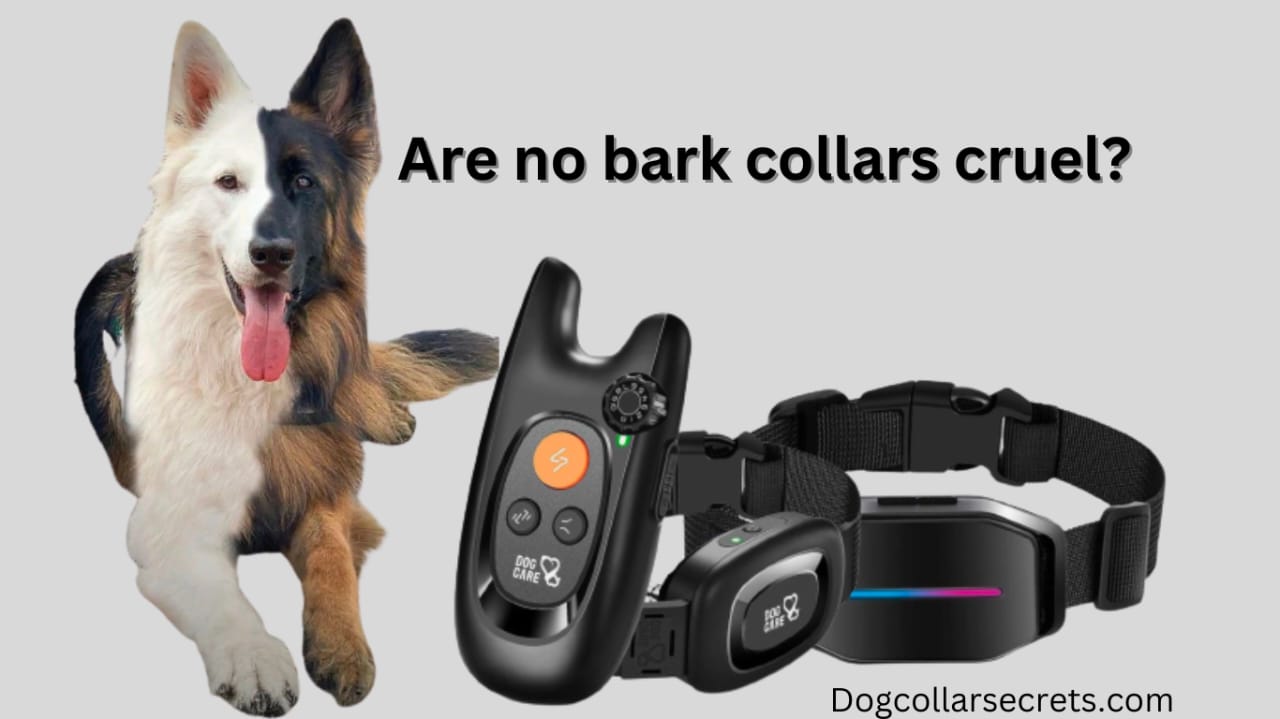Are no bark collars cruel?

Are no bark collars cruel?
No bark collars, which are also known as bark control collars, are devices designed to address excessive barking in dogs. These collars work by delivering various types of corrections, such as vibrations, sounds, or mild static shocks, when a dog barks. The question of whether no bark collars are cruel has sparked debate among dog owners and experts. Let’s explore this topic further.
Are no bark collars cruel?” This question has sparked debates among dog owners and experts. The answer depends on one’s perspective. Some consider them cruel due to their aversive methods, while others believe they can be effective when used responsibly and in specific situations. Ultimately, whether they are seen as cruel or not hinges on individual opinions and ethical considerations.
Are no bark collars cruel? Understanding no bark collars
the question of whether no bark collars are cruel depends on how they are used and the individual dog’s temperament. It’s essential for dog owners to thoroughly research and consider the potential consequences and ethical aspects of using such collars. Responsible training methods, professional guidance, and considering alternatives like positive reinforcement training can help address excessive barking while prioritizing the well-being and comfort of your furry companion.
How does a no bark collar work?
A no bark collar is designed to discourage a dog from excessive barking by using various methods to interrupt or deter the behavior. Here’s how a typical no bark collar works:
1. Sound Detection:
Many no bark collars have built-in microphones that can detect the sound of a dog’s bark. When the collar detects the bark, it triggers a response.
2. Vibration:
Some collars use vibrations as a correction method. When the dog barks, the collar emits a gentle vibration that is meant to distract or startle the dog, interrupting the barking behavior.
3. Spray Collars:
Certain no bark collars utilize a small canister filled with citronella or a similar substance. When the dog barks, the collar releases a burst of this scent in front of the dog’s nose, which can be unpleasant and distracting.
4. Static Stimulation:
Another type of no bark collar delivers a mild static shock to the dog when it barks excessively. The shock is typically not harmful or painful but is meant to get the dog’s attention and discourage further barking.
5. Remote Control:
Some advanced no bark collars can be controlled manually by the owner using a remote. This allows the owner to activate the correction method when they deem it necessary.
6. Progressive Correction:
Many collars use a progressive correction approach, starting with a milder correction and gradually increasing the intensity if the dog continues to bark. This is intended to teach the dog to associate barking with the correction and, over time, reduce the barking behavior.
7. Safety Mechanisms:
Reputable no bark collars often include safety features, such as automatic shut-off timers, to ensure that the correction is not delivered excessively or for extended periods.
It’s important to note that while no bark collars can be effective in certain situations, their use should be accompanied by responsible training and an understanding of the dog’s needs. Using these collars incorrectly or excessively can potentially harm the dog and should be avoided.
How to use a no bark collar?
here are the key points for using a no bark collar effectively:
- Choose the right collar for your dog’s size and barking behavior.
- Read the manufacturer’s instructions carefully for proper usage.
- Fit the collar snugly but not too tight, allowing two fingers of space.
- Start with the lowest correction level and increase only if necessary.
- Don’t leave the collar on your dog for extended periods.
- Remove the collar when it’s not needed.
- Combine collar use with positive reinforcement training.
- Prioritize your dog’s comfort and well-being throughout the process.
Are no bark collars inhumane?
The question of whether no bark collars are inhumane revolves around how they affect dogs. Some people worry that these collars, which are designed to stop dogs from barking too much, might be unkind. They’re concerned that methods like shocks or loud sounds could make dogs uncomfortable or stressed, which goes against being kind to animals.
On the other hand, some folks believe that no bark collars can be used in a humane way. They say that if you fit the collar properly, use the lowest level of correction, and don’t leave it on your dog for too long, it can help without being mean. The debate over whether these collars are inhumane or not often comes down to personal beliefs about what’s kind and fair for our furry friends.
Do anti-bark devices hurt dogs?
The question of whether anti-bark devices hurt dogs is a matter of how these devices are used and their specific design. When used correctly and responsibly, many anti-bark devices are intended to deter excessive barking without causing harm to dogs. These devices often employ methods like emitting sounds, vibrations, or mild static corrections to get a dog’s attention and encourage them to stop barking.
However, there are concerns about the potential for harm if anti-bark devices are used improperly. For instance, if the correction levels are set too high or the device is left on for extended periods, it could cause discomfort or stress to the dog, which is not humane. It’s essential for dog owners to carefully follow the manufacturer’s guidelines and ensure the device is correctly fitted to their dog to minimize any risk of harm. Additionally, some experts advocate for alternative training methods, such as positive reinforcement, which rewards good behavior instead of relying solely on deterrent devices to address barking issues. Ultimately, the safety and well-being of dogs should always be the top priority when using anti-bark devices.
Conclusion
In conclusion, the question of whether are no bark collars cruel? has sparked passionate debates among dog owners and experts. It’s clear that opinions on this topic vary widely. Some believe that these collars can be cruel due to the aversive methods they employ, such as shocks or loud sounds, which may cause discomfort or stress to dogs. On the other hand, proponents argue that when used responsibly and in specific situations, no bark collars can be effective tools in curbing excessive barking.
The key takeaway is that responsible usage and a deep understanding of your individual dog’s temperament are essential when considering the use of no bark collars. Prioritizing the well-being and comfort of your furry companion should always be the primary concern. While these collars can be a part of managing excessive barking, they should be used in conjunction with positive reinforcement training and responsible training techniques. Ultimately, whether no bark collars are deemed cruel or not depends on how they are applied, and it is essential for dog owners to make informed and ethical decisions regarding their use.
You may also read this: How Many Inches Is A Large Dog Collar?
What Age Can You Use A Bark Collar On A Dog?





